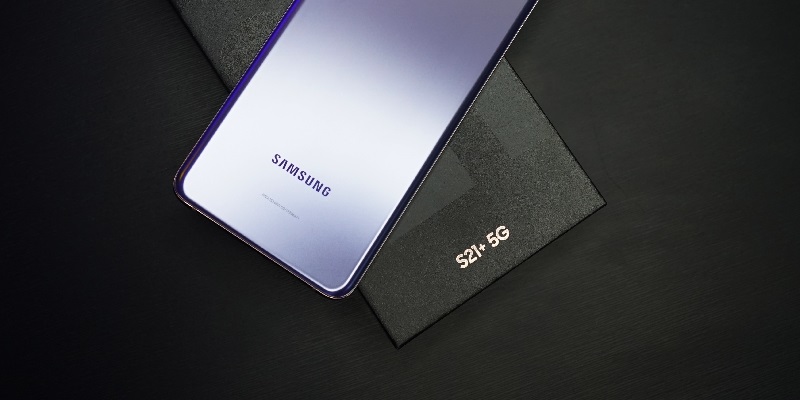Samsung’s flagship smartphones, the Galaxy S21 Plus and the Galaxy Note 20 Ultra, are known for their cutting-edge technology and exceptional features. In this article, we will delve into a detailed comparison of these two devices, focusing on their aesthetics, display, performance, battery life, and camera capabilities. By the end, you will have a comprehensive understanding of the strengths and weaknesses of each phone, allowing you to make an informed decision.
Aesthetics and Design
Both the Samsung Galaxy S21 Plus and the Galaxy Note 20 Ultra boast stunning aesthetics and premium craftsmanship. The S21 Plus demonstrates a sleek and modern design, with its glass back and metal frame seamlessly blending together. On the other hand, the Galaxy Note 20 Ultra exudes sophistication with its refined design and the use of premium materials like glass and metal. Overall, both devices are sleek and visually appealing, providing a premium feel in the palm of your hand.
Display
The display is a crucial aspect to consider when comparing the Samsung Galaxy S21 Plus and the Galaxy Note 20 Ultra. Both phones feature an edge-to-edge display with minimal bezels and a punch-hole camera cutout in the center, offering a seamless and immersive viewing experience. The S21 Plus boasts a 6.7-inch Dynamic AMOLED 2X display with a resolution of 1080 x 2400 pixels, providing vibrant colors and sharp visuals. Meanwhile, the Note 20 Ultra comes with a larger 6.9-inch Dynamic AMOLED 2X display with a resolution of 1440 x 3088 pixels, offering even more immersive and detailed visuals. Whether you are scrolling through social media or watching movies, both displays deliver an exceptional visual experience.
Performance
When it comes to performance, both the Samsung Galaxy S21 Plus and the Galaxy Note 20 Ultra are powerhouses in their own right. The S21 Plus is equipped with the powerful Exynos 2100 or Qualcomm Snapdragon 888 processor (depending on the region), combined with 8GB or 12GB of RAM, ensuring smooth multitasking and snappy performance. Similarly, the Note 20 Ultra features the Exynos 990 or Qualcomm Snapdragon 865 Plus processor (depending on the region) and 12GB of RAM, providing exceptional speed and performance. Whether you are gaming, editing videos, or running multiple demanding apps simultaneously, both devices can handle it with ease.
Battery life
No one wants a phone that dies in the middle of the day, and both the Samsung Galaxy S21 Plus and the Galaxy Note 20 Ultra offer impressive endurance to get you through a full day of use. The S21 Plus is equipped with a 4,800mAh battery, while the Note 20 Ultra boasts an even larger 4,500mAh battery. Both phones optimize power consumption, allowing you to stream videos, browse the web, and use your favorite apps without constantly worrying about battery life. Additionally, both devices support fast charging, enabling you to quickly replenish the battery when needed.
Camera capabilities
Both the Samsung Galaxy S21 Plus and the Galaxy Note 20 Ultra boast impressive camera setups that can capture stunning photos and videos. The S21 Plus features a triple camera system, including a 12-megapixel primary sensor, a 12-megapixel ultra-wide lens, and a 64-megapixel telephoto lens. The Note 20 Ultra, on the other hand, takes it a step further with its versatile quad-camera setup. It includes a 108-megapixel primary sensor, a 12-megapixel ultra-wide lens, a 12-megapixel periscope lens with 5x optical zoom, and a Laser AF sensor. Both phones offer exceptional image quality, sharpness, and dynamic range, allowing you to capture every detail in your photos. The Note 20 Ultra takes the lead with its 5x optical zoom and up to 50x Space Zoom feature, which let you capture distant objects with excellent clarity.
In conclusion, both the Samsung Galaxy S21 Plus and the Galaxy Note 20 Ultra offer exceptional features and capabilities. The S21 Plus impresses with its sleek design, immersive display, powerful performance, long-lasting battery life, and versatile camera system. On the other hand, the Note 20 Ultra stands out with its refined design, larger and more detailed display, impressive camera capabilities, and the added functionality of the S Pen. Ultimately, the choice between these two devices depends on your personal preferences, budget, and the specific features that matter most to you. Consider your needs and use cases carefully before making a decision, and you won’t be disappointed with either choice.

